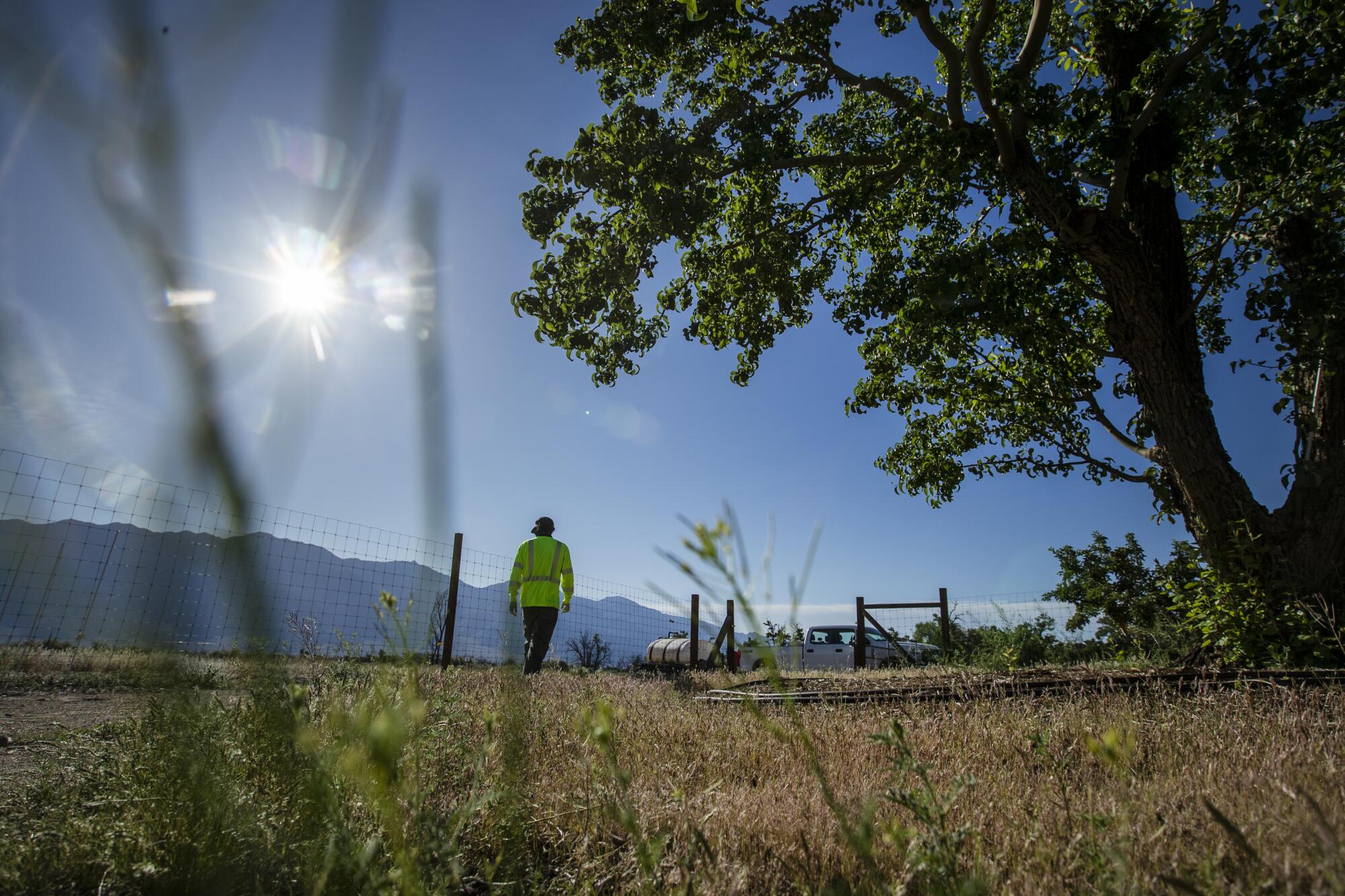
- Share via
MANZANAR NATIONAL HISTORIC SITE, Calif. — The orchards planted in the 1920s around the old town of Manzanar have faced drought, flooding, wildfires, pests, marauding elk and trespassers armed with chain saws.
Still, they survived, reminders of what happened here, site of the nation’s most widely known incarceration camp.
“Each tree here has a story to tell,” said Dave Goto, whose great-uncle was held at Manzanar and served as its doctor. “It’s an honor to preserve them, and really tough to lose one.”
For Goto, preserving the pear trees is part of a larger mission — of not letting the country forget how Americans of Japanese descent were deprived of their civil liberties and shipped off to remote prison camps during World War II.
Now, the trees face another test.
On a recent crisp weekday morning, Goto climbed a 15-foot ladder and glumly eyed evidence of a contagious disease known as fire blight: oozing cankers and blackened leaves.
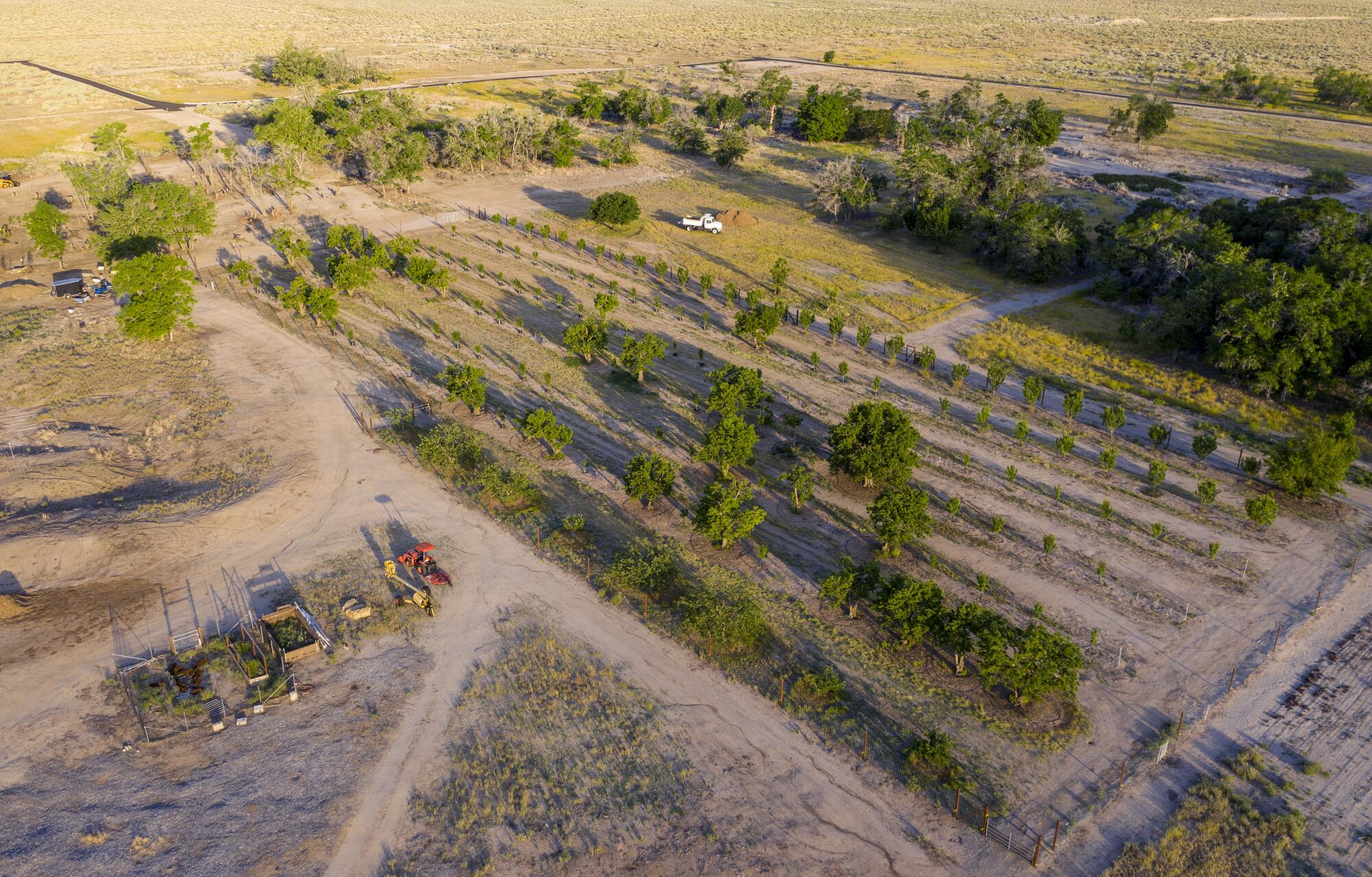
“I haven’t seen blight here in a while,” said Goto, 35, the arborist in charge of protecting the orchards from myriad forces that work against them in the harsh eastern Mojave Desert.
“It arrived in March and can spread pretty fast.”
The problem puts a knot in Goto’s jaw. And his job has been more difficult amid the COVID-19 pandemic. With the closure of the Manzanar National Historic Site, Goto’s work schedule was cut back from five days a week to three.
The Manzanar Oral History Project, in which surviving detainees were scheduled to provide center historians with interviews at their homes throughout California, also had to be suspended indefinitely because older adults are at higher risk for contracting COVID-19.
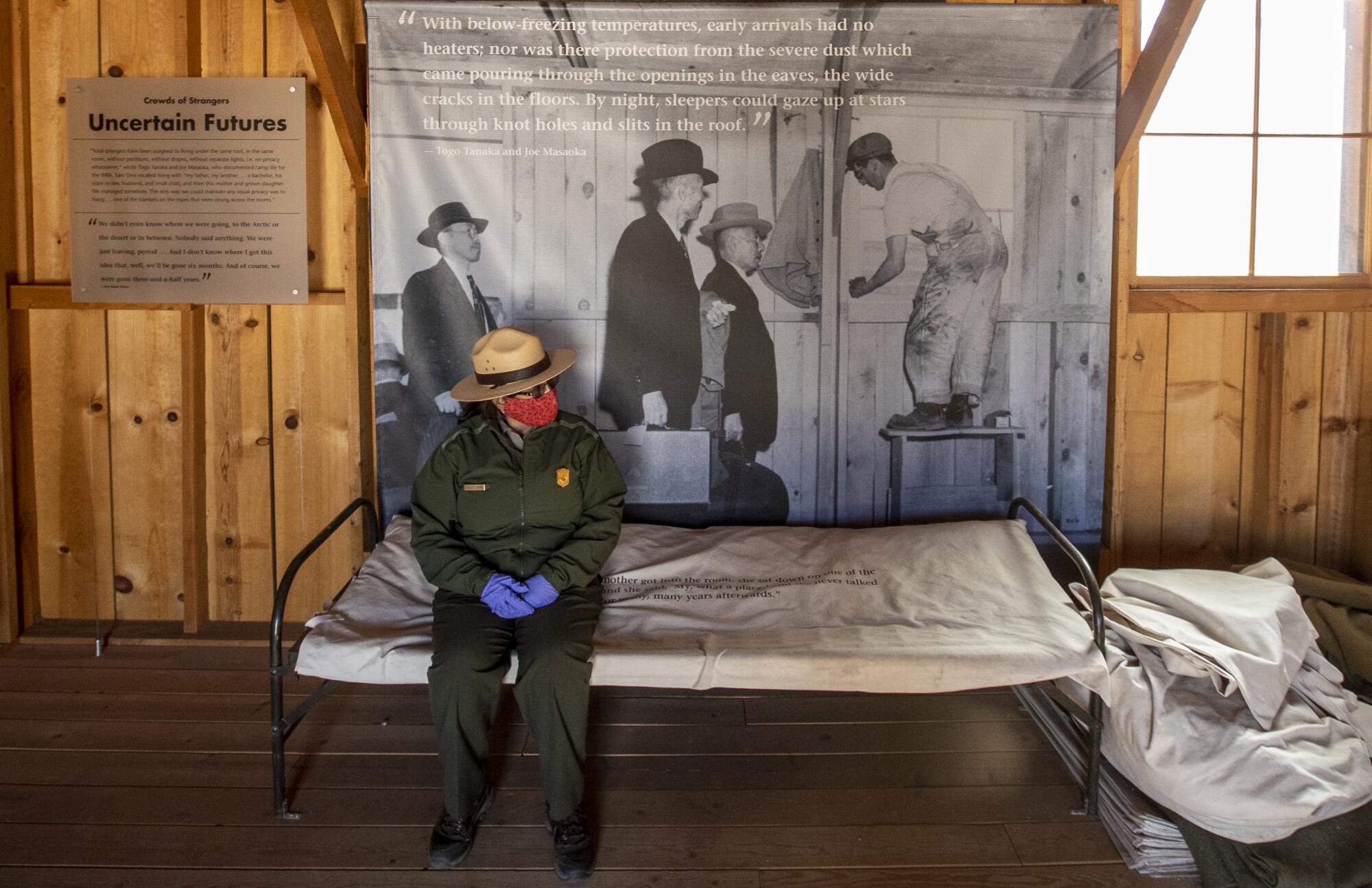
“I had to face up to a terrifying new reality: I’m a potential vector for these people,” said Rose Masters, a National Park Service ranger and oral history project manager at Manzanar. “I can’t risk carrying a deadly pathogen to people whose lives we are trying to save.”
Kenji Suematsu was among those interviewed before the project was halted. Now 86, he spent most of the war in an orphanage behind barbed wire at what was officially called the Manzanar War Relocation Center — an austere compound framed by the towering Sierra Nevada on the west and the Inyo Mountains on the east, about six miles south of Independence on U.S. 395.
Suematsu’s memories of Manzanar have faded with time. But he told Masters that he still remembers the pear trees that stood near what was known as “children’s village.” He was 7 years old when he arrived at Manzanar, and the orchards marked the seasons and came to stand as living symbols of perseverance.
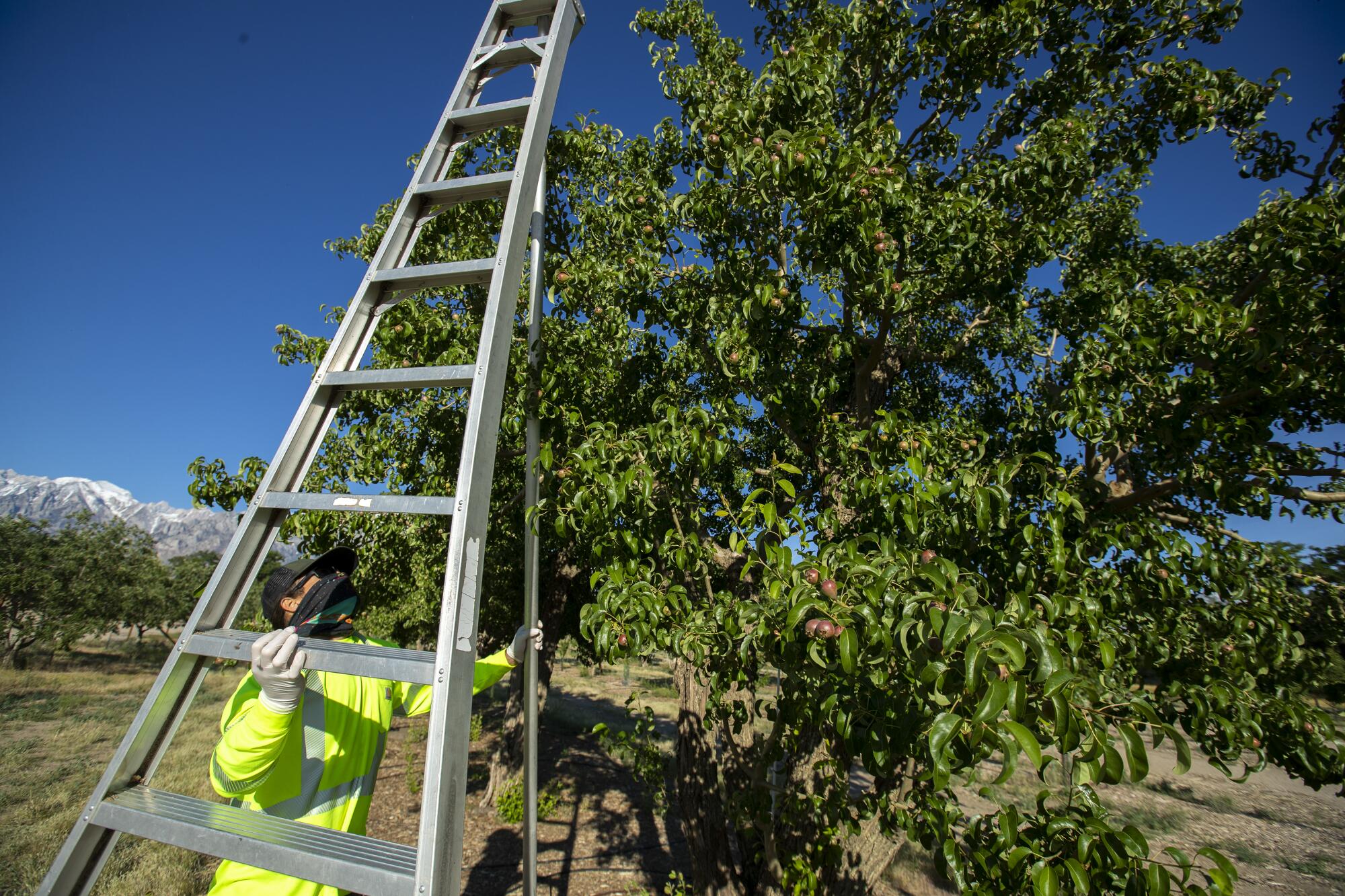
“When I looked up at the trees,” Suematsu told Masters, “I’d see that the branches had new leaves coming out,” a sign that roots were drawing up water and delicious fruit was on the way.
He also recalled what he described as “the incident in the orchard.”
“I didn’t get into trouble very much, or what you might call mischief,” he said. But one steaming summer day, he walked into an orchard, pulled off a pear and then sat down and ate it.
“We weren’t supposed to be in there,” he said, “and I got caught.”
His punishment was having to swallow a spoonful of cod liver oil.
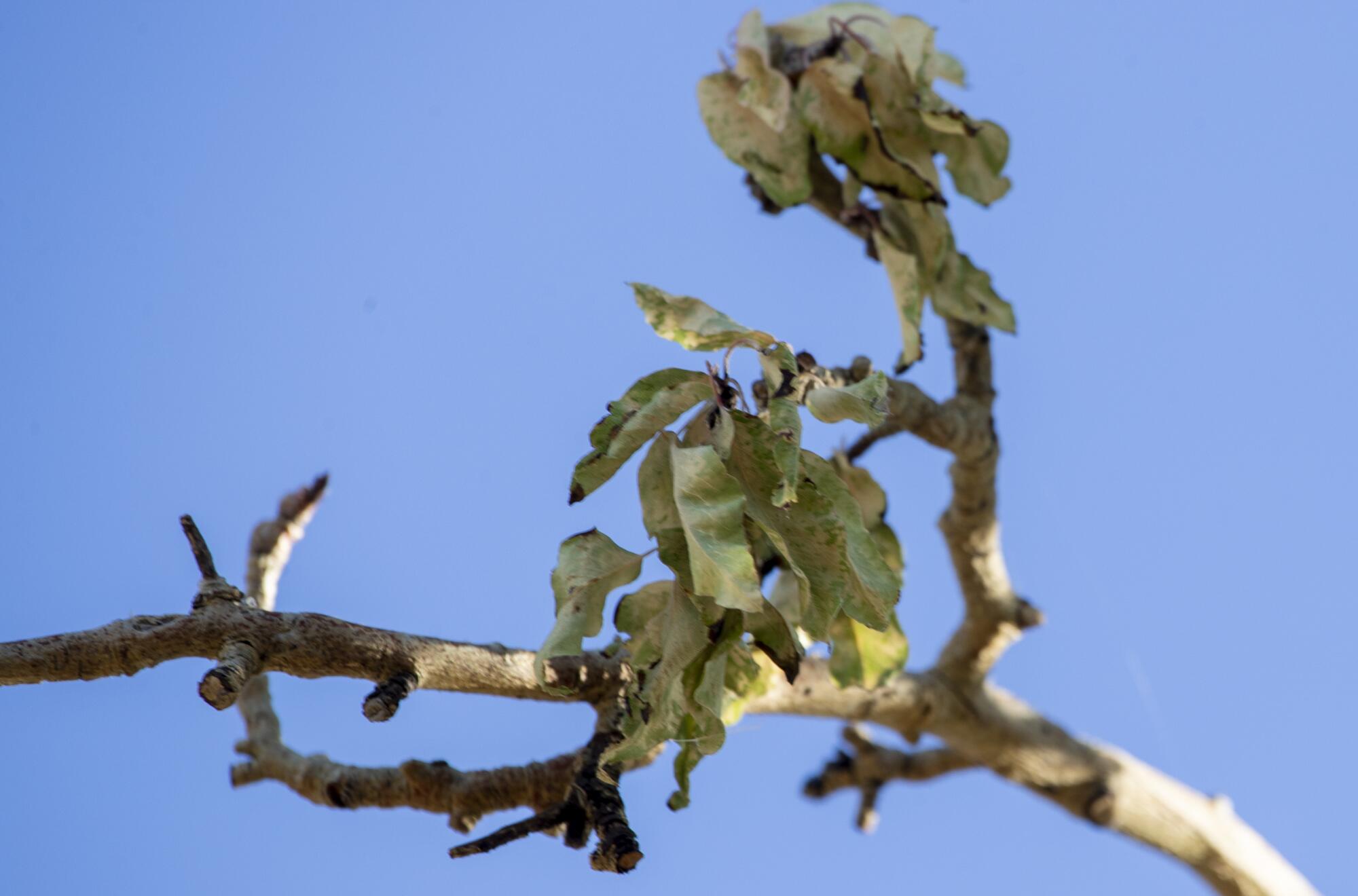
“The pear I took down was delicious, but the cod liver oil was horrible, and I’ll never forget that,” he recalled with a laugh.
After the war, Suematsu graduated from Roosevelt High School in Los Angeles and completed a volunteer stint in the U.S. Army.
He went on to become a noted, self-taught designer of zoom lenses for the motion picture industry.
::
About 120,000 people of Japanese ancestry were rounded up and incarcerated at 10 sites across the United States. Manzanar was the first to open and held about 10,000 people in tar-paper barracks surrounded by barbed wire and guarded by military police.
Prisoners lost their houses and farms, their livelihoods. Two-thirds were U.S. citizens.
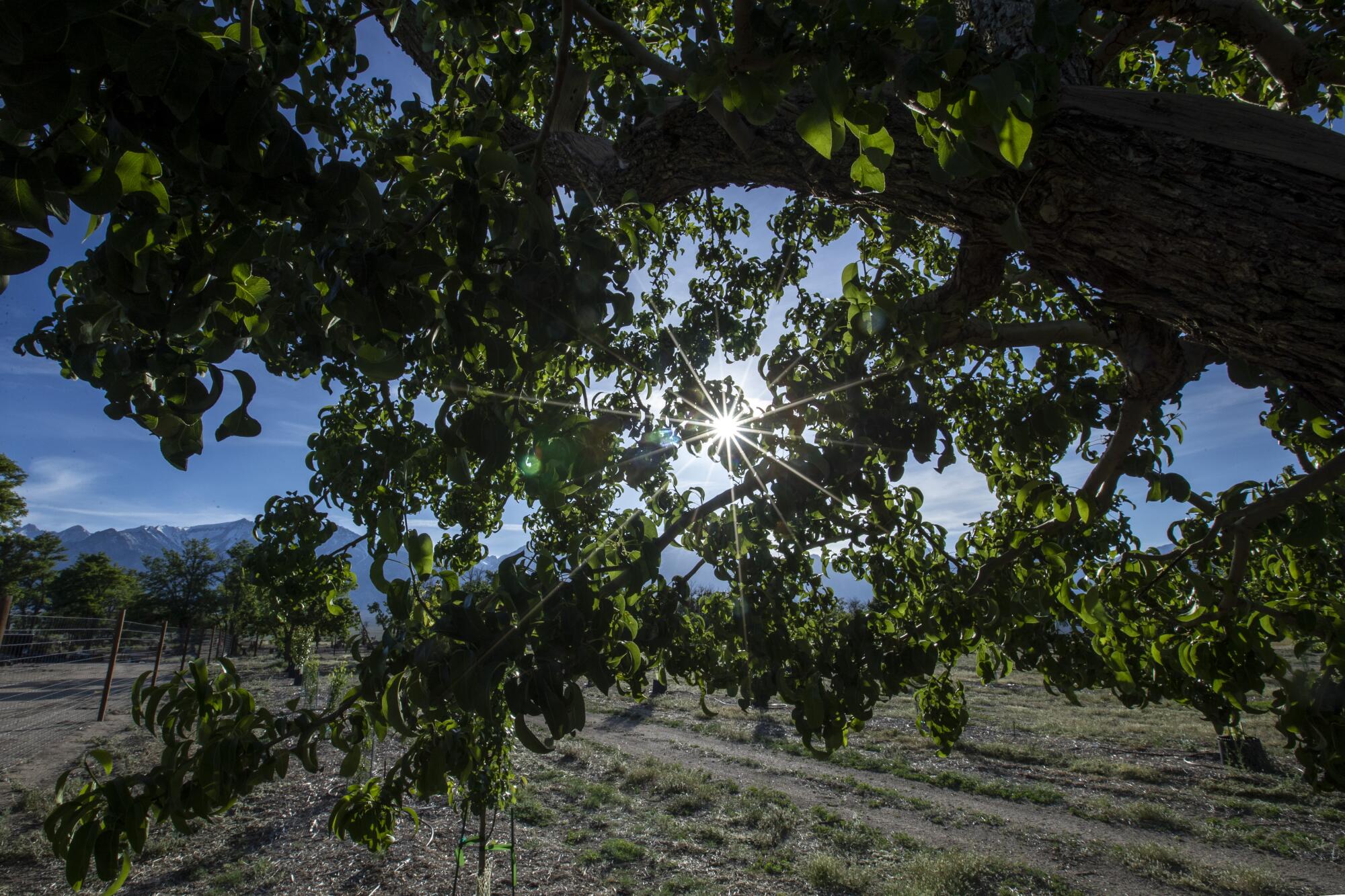
The site — scattered foundations, a cemetery and rock gardens, stark vistas that some call “the unchanged presence of the past” — now receives about 103,000 visitors each year.
Among the many annual pilgrims is Suematsu, who never heads home without a bagful of ripe pears picked just for him by Manzanar staffers.
“The last batch you gave me was delicious,” he said during his two-hour interview with Masters. “I ate every single one without having to look forward to a spoonful of cod liver oil.”

Then he surprised her with an urgent request: “Is it possible to get a small pear tree from Manzanar? A little tree I can plant in my garden at home?”
“That sounds like a wonderful idea,” Masters said.
“I’ll ask the arborist.”
Manzanar means “apple orchard” in Spanish; the trees there were planted in the 1920s by ranchers and farmers.
By the time the orchards had reached peak production, the Los Angeles Department of Water and Power began to acquire water rights and large tracts of land in the surrounding Owens Valley area.
“I haven’t seen blight here in while. It arrived in March and can spread pretty fast.”
— Dave Goto, Manzanar National Historic Site arborist
As a result, many residents of Manzanar sold their properties and relocated, and by 1934 the DWP had terminated irrigation of the orchards.
They were left abandoned until the prison camp was established in 1942.
Under the care of skilled Japanese American horticulturists incarcerated there, the fruit trees were revived and produced an abundance of apples, pears, peaches and other fruits for harvest.

Crews led by orchard foreman Takeo Shima picked 4,000 crates of Bartlett and Winter Nelis pears in 1942, according to documents archived at the historic site.
With the end of World War II in 1945, the camp was closed, and the orchards were abandoned for 50 years until the site was established by Congress in 1992 to serve as a reminder of the fragility of American civil rights and to honor families whose memories are tied to the desolate landscape.
Today, a total of 144 fruit trees remain at the site, and all but a dozen or so are irrigated by automatic drip systems. They provide insights into the values and needs of detainees, as well as the operations of the 814-acre site.
During a recent tour, Manzanar Supt. Bernadette Johnson said: “These trees are looking back at us and saying, ‘Don’t worry. We’ll survive the impacts of the coronavirus pandemic, too.’”
Goto agrees the trees have the strength to overcome the blight, but “they still need lots of attention and care.”

As he spoke, he shoveled a layer of soil onto the base of a pear tree and a nectarine tree, both of which were planted by detainees just a few yards from the orphanage. Moments later, he ran enough water from a hose to thoroughly settle the ground beneath the trees that were laden with bright green leaves and young fruit.
“It’s tough to overwater them in this hot, dry desert environment,” he said. “Underwatering, however, can be a serious problem.”
While landscaping and tending the orchards, Goto often turns up artifacts including jewelry, children’s jacks and marbles, porcelain teacups and saucers.
“When I discover artifacts, I look them over and then rebury them even deeper in the ground,” he said. “They belong here.”









